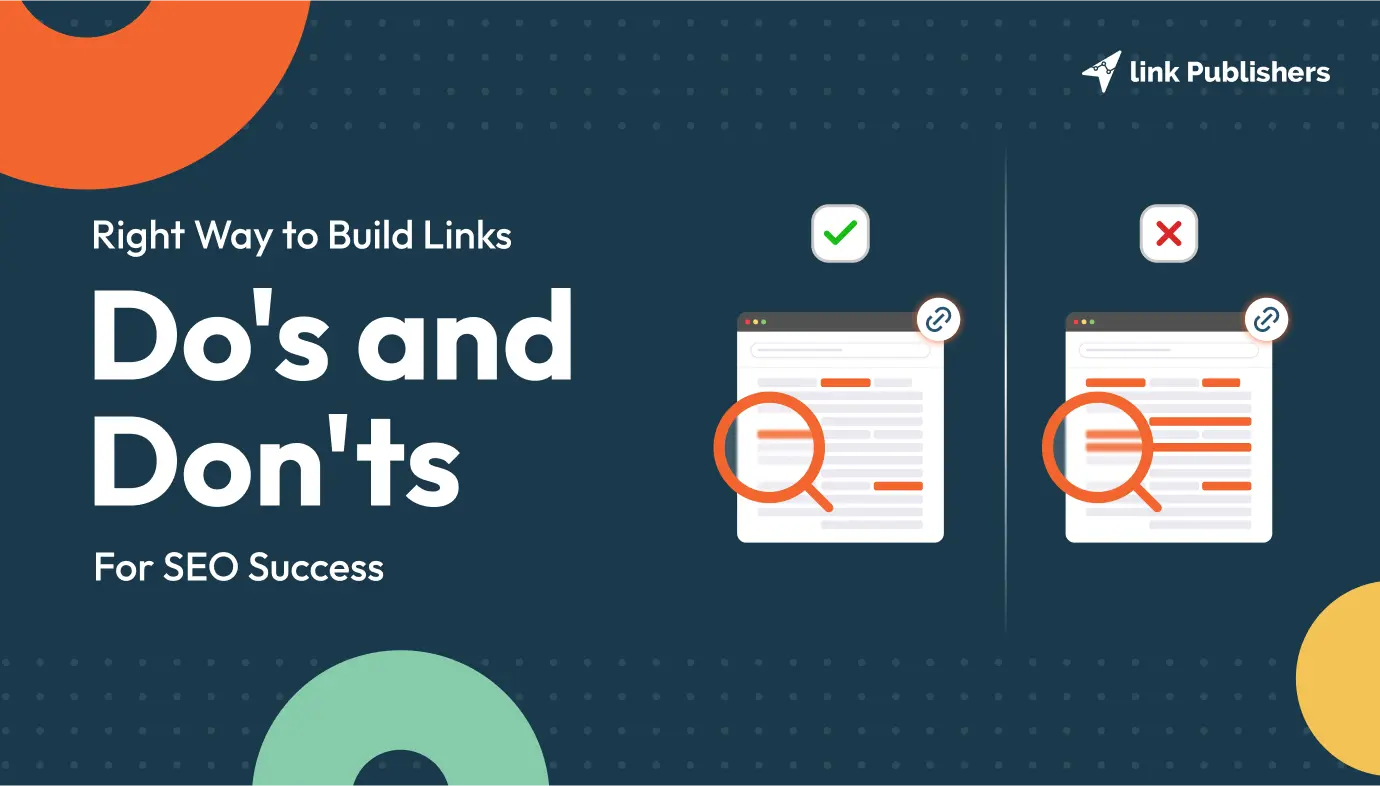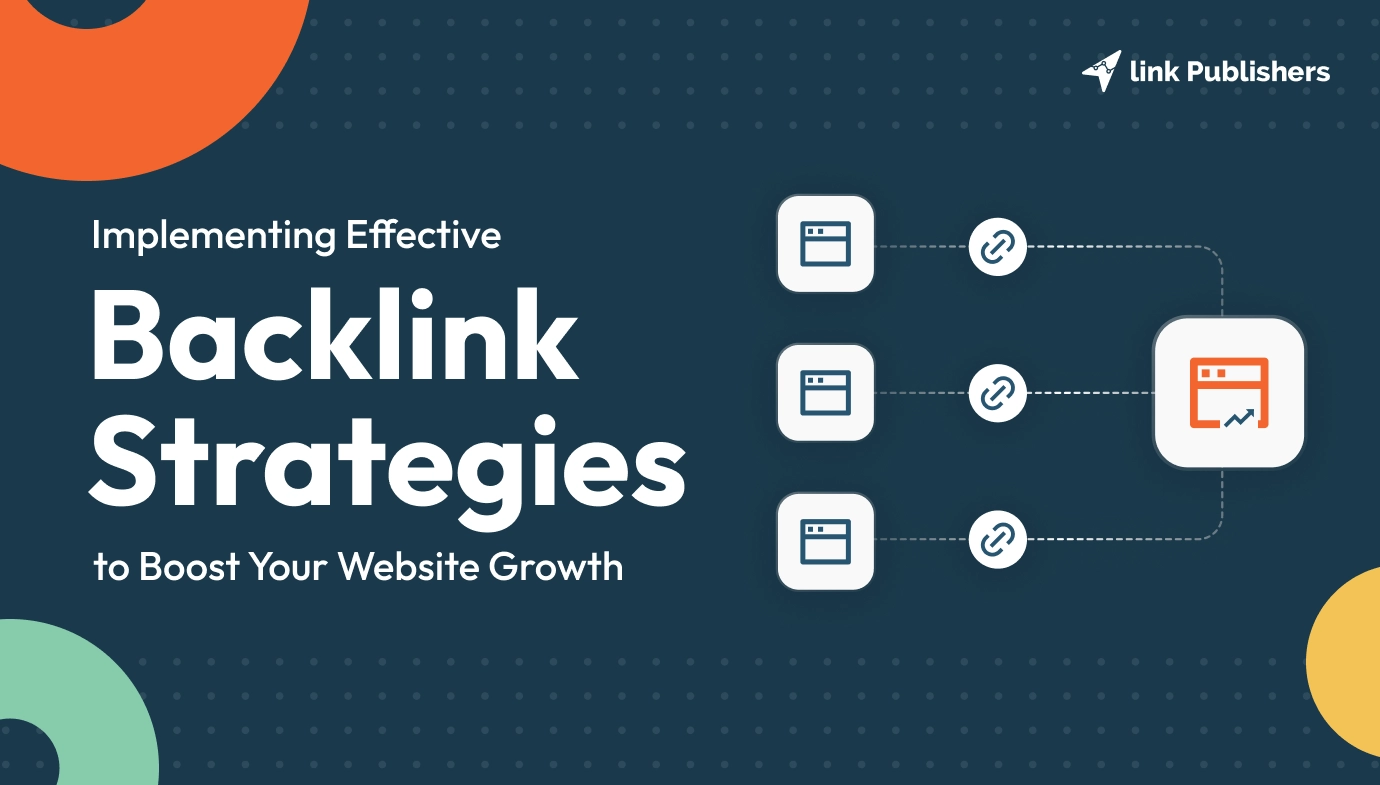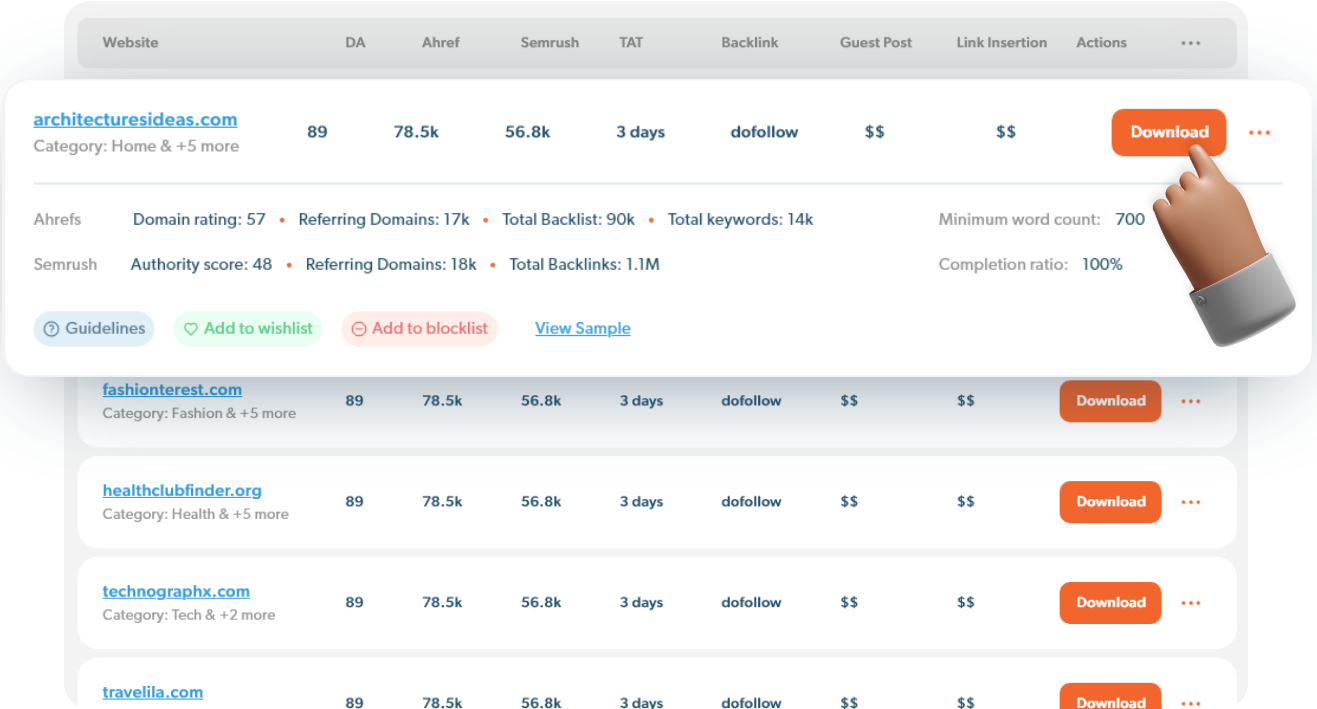While SEO and lead generation are two different processes, they’re known to do wonders when combined together. Didn’t know that? We’ve got you covered.
In this blog, we’ll discuss what SEO lead generation is, how lead generation and SEO work together, and why lead generation SEO is essential. We’ll also list some practical tips to help you leverage SEO for lead generation. So, read in full.
What is SEO Lead Generation?
Search engine optimization is when you modify multiple aspects of your website to boost its visibility and ranking in the search engine search results (SERPs). However, when this technique helps generate leads for your business, it’s known as SEO lead generation.
But how do SEO and lead generation work together? Let’s learn about that below.
How do SEO and Lead Generation Work Together?

As stated earlier, SEO improves your search ranking and visibility. When you appear more frequently at the top of the SERPs for relevant keywords, more people view and interact with your business. This helps you generate highly targeted or relevant leads whom you can nurture and convert into paying customers.
Example:
Let’s say you own a photography studio specializing in newborn photo shoots. Now, your target audience is young couples who’ve just turned parents.
However, to drive leads to your business, you must do much more than just create a website. You need to implement an SEO strategy, including keyword research, content creation, building brand authority, credibility, etc.
When you do the above, your website will rank higher specifically for the keywords your target audience is searching for. This will help you gain more visibility and generate targeted leads for your business, which are easy to convert.
Why is Lead Generation SEO Important?

Lead generation SEO brings the following benefits to your business:
More effective SEO:
Almost every online business performs SEO, but not all generate leads. Why? This happens because their SEO is not targeted or effective enough.
However, when you perform lead generation SEO, you implement strategies with a motive to generate leads. This improves the focus and overall effectiveness of your SEO efforts, improving your ROI.
Budget Friendly:
While SEO also requires some investment, it’s an affordable method for generating leads in the long run. Take PPC for example. PPC is surely a fast method for generating leads. However, it’s expensive as you need to pay for every click you generate. And the moment you stop spending, you stop generating leads.
SEO, on the other hand, takes time and money. However, it helps you build long-lasting visibility and organic traffic. This further helps you keep generating leads for a long time, even if you plan to pause your SEO efforts.
Quality Leads:
According to a HubSpot report, 60% of marketers consider inbound strategies such as SEO and blogs to be the top sources for high-quality leads.
With search engine optimization, you can target your ideal audience who is searching for keywords relevant to your niche. This way, only the individuals who are interested (high quality) in your business will interact with your website, enabling you to generate qualified leads.
Top 7 Tips to Boost SEO For Lead Generation
Here are some tips to help you with effective SEO lead generation:
1. Hyper-Focused Keyword Research

No SEO strategy is complete without keyword research. However, you need to dive a little deeper when it comes to SEO for lead generation. Instead of focusing on just any type of keywords, you should primarily focus on transactional keywords.
Transactional keywords are the ones that indicate the searchers want to complete an action, i.e., make a purchase. Let’s say a visitor is searching for “baby diapers buy online.” Now, this long-tail keyword indicates the customer has an intent to buy diapers online.
By creating content around the above and similar keywords, you can bring the right type of people to your website. While you may not get much search traffic using detailed keywords, the quality of leads you get is higher. And this makes them easy to convert.
Pro Tip: To get started with keyword research, you can use SEMrush. Just enter the domain of your competitor and hit search. Scroll a little and find keywords your competitors are paying for. If your competitors are paying for some keywords, it means those keywords are driving their sales and traffic. You can use these keywords to your favor without having to reinvent the wheel.
2. Create SEO-optimized Content for your Website
Once you have the right keywords at your disposal, you should start creating SEO-optimized content, preferably blogs and articles. This is essential if you wish to build credibility and authority, boost your search rankings, and generate quality leads. Here’s what you need to do:
Incorporate the Keywords
It’s essential to include the keywords you researched in the content you create. This will help your content rank higher and appear whenever someone searches for relevant keywords. However, don’t stuff your content with keywords, as Google hates it.
Formatting
When you create blogs and articles, make sure you format them correctly. For instance, you need to include relevant H2, H3, and H4 subheadings throughout your blog. This helps make your content more scannable. Also, you must use bullet points to boost readability and user engagement.
Focus on Quality
While you should regularly produce content and include relevant keywords, it doesn’t mean you can compromise quality. Quality content takes you a long way. It helps you build trust among your customers and build authority in the industry.
To ensure quality, you can identify the right keywords that people are searching for. You can search those keywords and analyze blogs your potential competitors have written. This way, you can identify gaps they’ve left and fill them.
Pro Tip: While you should lay stress on blogs and articles, you must not ignore your website copy. Often, visitors will land on your home page and other pages. If the content is sub-standard or there is no content at all, it can ruin the UX, leading to a high bounce rate and poor conversion.
So, create an SEO-optimized web copy that entices the users the moment they land on any page on your website.
3. Improve your Website Speed

One of the most important aspects of lead generation SEO is the user experience. And website speed has a lot to do with user experience.
Let’s say you manage to improve your website’s ranking and attract organic traffic. If your website’s loading speed is poor, visitors will bounce off, and you won’t be able to generate leads. This will defy the entire purpose of SEO lead generation.
Even stats say the conversion rate drops by 4.42% with every additional second of page load time between 0-5 seconds. Also, around 70% of consumers say page speed has an impact on the willingness to purchase from an online retailer.
So, focus on improving your website speed. Here’s what you can do:
- Always choose the best-rated hosting provider.
- Make your website mobile responsible.
- Optimize all media, especially images, on your website.
- Clean up your database regularly.
- Install plugins that clear the cache.
- Remove any duplicate pages or broken links.
- Minify your code.
Pro Tip: To check how your website is performing, you can use PageSpeed Insights.
4. Link Building
Yet another strategy for effective SEO lead generation is link building. Link building is when you get inbound links from multiple high-authority websites. When multiple websites link back to your website, their link juice or value transfers to your domain, improving your search ranking.
Let’s say you own a gym and post detailed blogs on workouts and exercises. If some high authority website adds a link to your blog, the visitors on that page will visit your website, thinking of it as trustworthy. And this can increase the potential of them becoming your paying customers.
While link building is a great way to boost your SEO lead generation strategy, you must be careful about the link quality. What it means is you should only build backlinks from high-DA websites. This will help you strengthen your backlink profile and drive maximum value to your site.
To get started with link building, you can follow these tactics:
Guest Posting
This is the most common method of link building. Here’s what you need to do:
- You need to find high-DA websites in your niche that accept blog posts.
- Learn about their requirements and prepare a high-quality blog post.
- Create an enticing email, pitch your request, and follow up.
- Repeat this process until you get the desired backlinks.
If you don’t have a dedicated team of writers or marketing experts, you can simply buy guest posts from a guest post marketplace. Link Publishers, a guest post marketplace, has 60,000+ websites in their pool in multiple niches. They also have a team of writers and you can hire dedicated content writers to help you with the content.
Just choose the relevant websites, place an order for your content, and upload it. And you can get your guest post published within 30-32 hours. This process saves you time, which you can invest in your core operations.
Influencer Marketing
You can reach out to relevant influencers in your industry and ask them to review your product/service and link it back to your website. In exchange, you can offer a free trial or monetary compensation.
Press Releases
Several websites publish press releases on interesting events happening within organizations. You can create an engaging and news-worthy press release and ask a publication to publish it and give you a link back.
5. Implement Local SEO
If you’re a business with a physical location (gym, dental clinic, etc.) that caters to both online and local customers, you must focus on local SEO for lead generation. Local SEO helps your business rank higher when someone within your physical location’s vicinity searches for certain keywords.
Example For Gym SEO: Let’s say you own a Gym in Chicago. If someone in Chicago searches for “gyms near me,” Google will show all the listings within the vicinity of the searcher. Here’s an example:

Your listing will appear here only if you have optimized for local SEO (and have a Google business profile). And if it does, you’ll be able to capture more of your local customers and substantially increase the footfall. Here’s what you can do to optimize local SEO for lead generation:
Google Business Profile (GBP)
Claim or create your listing Google Business Profile. Enter all the necessary details (name, address, phone, location, website, etc.) and include relevant SEO keywords wherever possible. Also, encourage your existing customers to leave reviews. This will help you build trust and credibility among potential customers.
Register on Local Directories
Create a listing on local directories based on your business and location. However, make sure NAP (name, address, and phone) details are accurate and consistent across all listings.
Optimize On-Page Content
Make sure to include local keywords in your on-page content. Examples include “gyms near me” or “best gyms in Philadelphia “. This will help your website rank higher for local searches.
6. Social Media Channels
While social media isn’t a direct ranking factor for Google, businesses with active social media channels tend to rank higher in SERPs. So, it’s only logical to have accounts on relevant social media channels & create regular content to engage your audience. Doing this will help you:
Improve Brand Reach
When you publish content on social media channels, people tend to engage with it. This engagement brings familiarity with your brand and thus improves the likeliness of individuals searching for your business on Google.
Boosts Authority
Consistently creating quality content on multiple social media channels improves your authority and credibility as a business. Moreover, Google appreciates creators who demonstrate Experience, Expertise, Authoritativeness, and Trustworthiness with their content.
Backlink Generation
If you manage to create relatable, valuable, and engaging content, visitors might link to it. This way, you can naturally generate backlinks, boosting your search rankings.
Organic Traffic: By mentioning a link to your website on social media channels, you can direct the traffic to your website. With a creative web copy, you can convert those visitors into paying customers.
7. Mobile Optimization

According to stats, 92.3% of internet users access the internet via smartphone. Around 55% of the website traffic comes from mobile devices. These stats show how common mobile phones have become when it comes to visiting the internet or browsing websites.
However, if your website is not optimized for mobile, you could ruin the user experience and push them away. This can make it hard to convert visitors into leads and paying customers.
One of the best ways to optimize your website for mobile is by using responsive design. Responsive design renders the page based on the device type, making it ideal for any device.
Wrapping Up
Implementing SEO with a focus on lead generation can help you substantially boost the effectiveness of your SEO effort. This combination is what you need to have an edge over your competitors and generate quality leads without breaking the bank.
So, what are you waiting for? Study the tips listed in this blog closely, and never waste money on lead generation.
FAQs
How Much Does Lead Generation SEO Cost?
The answer to this question depends on numerous factors, such as your website’s condition, requirements, location, etc. However, quality SEO services generally range from $750 to $2000. You can calculate the cost per lead based on how many leads you generate from SEO.
How do you Generate Organic Leads in SEO?
As mentioned above in the blog, you can follow these tips for organic SEO lead generation:
- Hyper-focused Lead Generation
- SEO Optimized Content Creation
- Improved Website Speed
- Link Building
- Local SEO
- Social Media
- Mobile Optimization
However, if you lack dedicated in-house experts, hiring a lead generation SEO company that specializes in lead generation SEO services for the domain is a good decision.
Is Mobile Optimization Important for SEO Lead Generation?
The majority of website traffic comes from mobile phones. If your website isn’t optimized for mobile devices, the organic traffic you generate from SEO won’t stay on your website. And if the traffic doesn’t stay, how will you convert them into leads and further into customers? So, yes, mobile optimization is essential for successful SEO lead generation.







